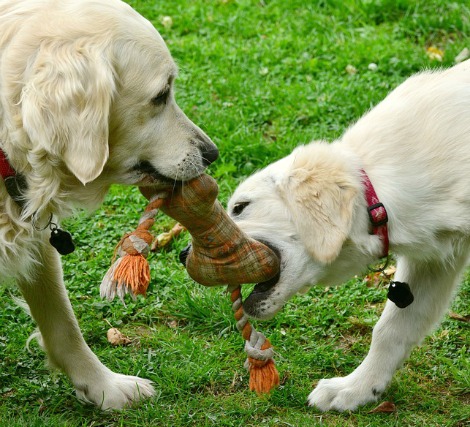The Wild Side of Dogs: 3 Ways to Handle an Aggressive Chewer
 Pet owners love their dogs and enjoy spending time with them. However, it is negative behavior patterns that make it difficult to enjoy all the time those pet owners have with their furbabies. Dogs, especially puppies, love to chew on items that aren’t theirs. Pet owners who need help can review the three ways to handle an aggressive chewer and learn strategies to prevent negative behavior patterns.
Pet owners love their dogs and enjoy spending time with them. However, it is negative behavior patterns that make it difficult to enjoy all the time those pet owners have with their furbabies. Dogs, especially puppies, love to chew on items that aren’t theirs. Pet owners who need help can review the three ways to handle an aggressive chewer and learn strategies to prevent negative behavior patterns.
1. Behavioral Training for Your Dog
Behavioral training for dogs teaches the pets to stop chewing on items such as shoes, furniture, and household items. The trainers use positive reinforcement for exemplary behavior and to encourage the dogs to continue to behave appropriately. During training, the instructor gives the dog a treat each time the pet obeys and refrains from chewing. Trainers place items in front of the dogs, such as shoes, and monitors the dog’s behavior.
Most pet stores offer behavior modification training for dogs, and the services aren’t expensive. Dog owners can bring their dogs to the training sessions and learn how to control their behavior at home. It is a great way to manage an aggressive chewer and save household items from damage. Pet owners can get more tips from Pet Parents now.
2. Substituting Durable Chew Toys for Your Shoes
Aggressive chewers need something to pacify them while their owners are away from home. The most common causes of aggressive chewing are anxiety and depression. Dogs need attention and stimuli to keep them engaged. When their pet owners aren’t home, the dogs become anxious, and they show it through negative behavior patterns, including chewing on the owner’s favorite shoes or their furniture.
A durable chew toy can pacify the dog and give them something to gnaw on instead of the furniture or shoes. Rawhide is a superb choice for dogs, and it has a pleasing taste. Training the dogs to chew on the toys helps pet owners save household items and prevent a dog from destroying them. However, finding the right chew toy requires trial and error, as not all dogs will take to the same chew toys. Giving the dogs a variety of toys from which to choose can increase their interest in the toys and prevent property damage and avoidable accidents.
3. Ensuring Your Dog Gets Enough Exercise
Ensuring the dog gets enough exercise during the day helps to curb the dog’s chewing behaviors. Dogs need exercise every day to work off anxiety and eliminate excess energy. Dog owners with larger dogs might consider doggy daycare while they are working. The services ensure that their dog gets adequate playtime and plenty of exercise during the day.
If the dog owner cannot afford a full day of doggy daycare, they could consider hiring a dog walker to help the dog get enough exercise each day. Dog walkers take the dogs to walking trails and dog parks to allow the pets to run around and exercise. Just two hours of running and playing could tire the dog enough to prevent anxiety while the owner is away. It can also prevent them from chewing household items.
Pet owners need a better solution when they find that their dogs are aggressive chewers. The behavior patterns are often caused by stress, anxiety, and depression. When owners are away, dogs exhibit signs of loneliness and depression by chewing up their owner’s favorite shoes. Pet owners can review three ways to handle an aggressive chewer and find a better way to control these urges.